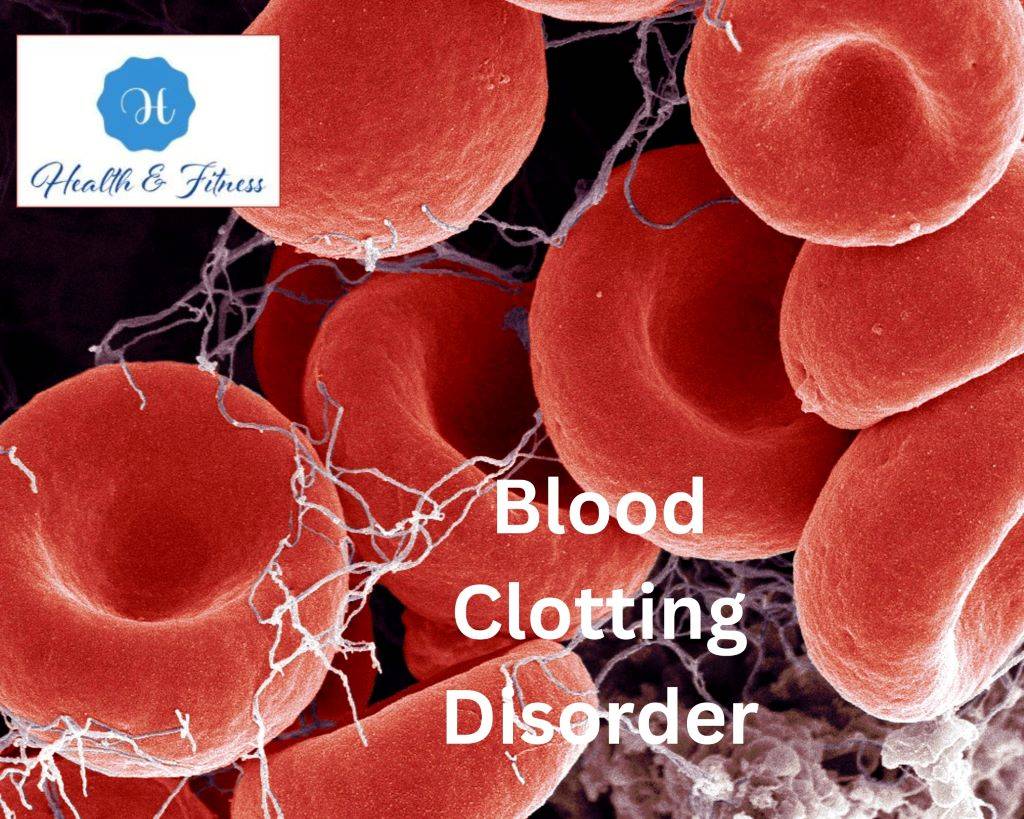Blood Clotting Disorder: Warning Signs You Shouldn’t Ignore
Discover crucial information about blood clotting disorders. Learn to recognize warning signs and take proactive steps for your health. The Menace of Blood Clotting Disorders: Key Indicators Not to Overlook Get vital insights about blood clotting disorders. Be alert to identify the red flags and adopt a proactive approach for your well-being.
Introduction to Blood Clotting Disorder
Disorders related to blood clotting are medical conditions that impact the normal clotting function of the blood. It is significant to know about this disease because it can lead to serious health problems like deep vein thrombosis, pulmonary embolism, and stroke. The blood is responsible for transporting oxygen, nutrients, and hormones to different tissues and organs in the body. For optimal body functioning, the blood must flow smoothly through the vessels. However, in the event of an injury, clotting of blood is essential to prevent excessive bleeding. This involves a series of reactions in the body, culminating in forming a blood clot.
Decoding Blood Clots
Blood clots are aggregates of blood that have transformed from a liquid state to a gel-like or semisolid state. Clotting is an essential process that prevents excessive blood loss following an injury. However, there are instances where blood clots form without any apparent reason and become hazardous if they migrate to vital organs such as the heart or lungs.
The clotting process involves multiple steps, with several proteins and blood cells playing crucial roles. Platelets, a blood cell, initiate the clotting process by adhering to the blood vessel lining and forming a plug that stops minor bleeding. Subsequently, a series of clotting factors (proteins) interact in a chain of reactions to form a stable clot that halts more substantial bleeding.
Types of Blood Clotting Disorders
Various blood clotting disorders exist, including hemophilia, Leiden Factor V, and Protein C or S deficiency. These disorders can be inherited (genetic) or acquired (developed after birth).
- Hemophilia:
Hemophilia is a genetic disorder that hinders the blood’s clotting ability. Individuals with hemophilia tend to bleed for a prolonged period post-injury compared to those without the condition. They may also experience internal bleeding, particularly in the joints.
- Leiden Factor V:
This is a change in factor V, a part of the blood that helps it clot. This mutation makes it more that abnormal blood clots will form in the veins or vessels.
- Lack of protein C or S:
Clotting in the blood is controlled by proteins called protein C and protein S. A deficiency in either protein elevates the risk of blood clot formation.
Top Red Flag of Blood Clotting Disorder
Identifying the signs of a blood clotting disorder is crucial to seek timely medical intervention. Here are ten red flags to be vigilant about:
Deep Vein Thrombosis (DVT):
DVT is a blood clot that develops in a deep vein, typically in the lower leg or thigh. Symptoms may encompass pain, swelling, warmth, and redness in the affected region.
Pulmonary Embolism (PE):
PE occurs when a blood clot becomes lodged in a lung artery, obstructing blood flow to a portion of the lung. Some signs are having trouble breathing, lung pain, and coughing up blood.
Stroke:
A stroke transpires when a blood clot obstructs an artery or a blood vessel ruptures, disrupting blood flow to a part of the brain. Symptoms may include sudden disorientation, numbness, or weakness in the face, arm, or leg, particularly on one side, and trouble speaking or understanding speech.
Others:
Swelling in a single limb:
This could indicate a deep vein thrombosis (DVT). It is imperative to seek medical attention if you observe unexplained swelling in any of your limbs.
- Intense headache or migraine:
A sudden, severe headache, or migraine could indicate a stroke or a blood clot in the brain.
- Unexplained, intense chest or abdominal pain:
This could indicate a blood clot in the lungs or heart.
- Visual disturbances:
Blurry vision, partial, or total vision loss, or double vision could indicate a blood clot in the eye or brain.
- Easy bruising or bleeding:
This could indicate a clotting disorder affecting the platelets or clotting factors in the blood.
- Frequent nosebleeds or bleeding gums:
This might also signal a platelet or blood clotting issue.
- Blood in the urine or stool:
This might indicate a clot forming in the kidneys or the digestive system.
- Heavy menstrual bleeding:
This could indicate a clotting disorder affecting the platelets or clotting factors in the blood.
Risk Factors for Blood Clotting Disorder
Genetic and lifestyle factors such as obesity, smoking, and prolonged immobility can augment the risk of developing a blood clotting disorder.
- Genetic Factors:
Some individuals have a genetic predisposition to develop blood clots, meaning they have inherited specific genes that make them more prone to blood clots. For instance, the factor V Leiden mutation increases the risk of blood clots.
- Lifestyle Factors:
Certain lifestyle factors can also elevate the risk of blood clots. These include:
- Obesity: Being overweight increases the pressure on the veins in the pelvis and legs, heightening the risk of blood clots.
- Smoking: Smoking damages the blood vessels’ lining, making it easier for blood clots to form.
- Prolonged immobility: Extended periods of sitting or lying down, such as during long flights or car journeys, can heighten the risk of blood clots.
Prevention for Blood Clotting Disorder
Adopting lifestyle changes, such as maintaining a healthy weight, regular exercise, abstaining from smoking, and managing stress, can help avert blood clotting disorders. Additionally, anticoagulant medications can help prevent blood clots in high-risk individuals.
Treatment for Blood Clotting Disorder
Treatment for blood clotting disorders typically involves anticoagulants (blood thinners) or clot-dissolving drugs. In more severe cases, surgical interventions may be required.
FAQs for Blood Clotting Disorder
1. Can blood clotting disorders be cured?
Some blood clotting disorders, such as those induced by lifestyle factors, can be managed or even reversed with lifestyle modifications and medications. However, genetic blood clotting disorders cannot be cured but can be managed with treatment.
2. Are blood clotting disorders hereditary?
Some blood clotting disorders are hereditary, transmitted from parents to their offspring through their genes. Others can be acquired and developed after birth because of lifestyle factors or other medical conditions.
3. Can exercise help prevent blood clotting disorders?
Regular physical activity can help maintain a healthy weight, essential for preventing blood clotting disorders. Exercise also aids in improving blood circulation, which can reduce the risk of blood clots.
4. Are there any natural remedies for blood clotting disorders?
Natural remedies such as maintaining a healthy weight, regular exercise, abstaining from smoking, and managing stress can help prevent blood clotting disorders. However, if you have a blood clotting disorder, it is vital to adhere to your healthcare provider’s recommendations and take prescribed medications as directed.
Note: This article is for informational purposes only and does not substitute professional medical advice. Seek the advice of your physician or other qualified health providers with questions you may have regarding a medical condition.
Conclusion for Blood Clotting Disorder
Blood clotting disorders can result in severe health complications, so it is vital to recognize the warning signs and seek medical intervention are experienced. Remember, early detection and treatment can make a significant difference.



